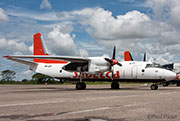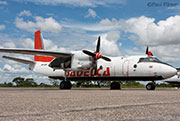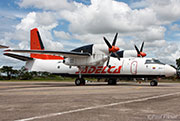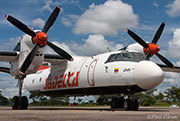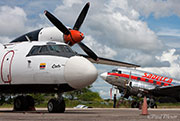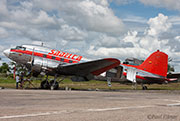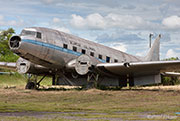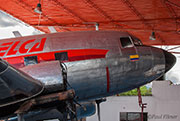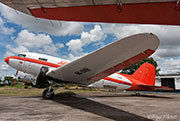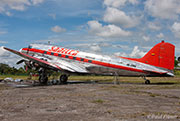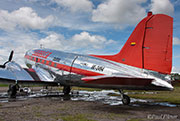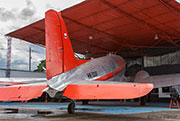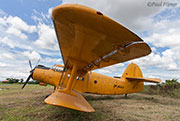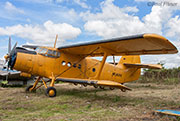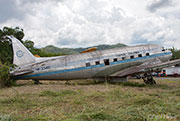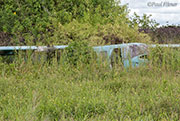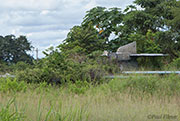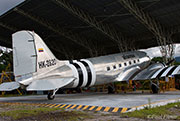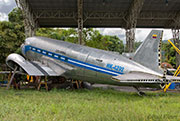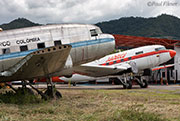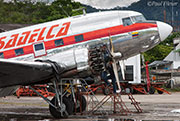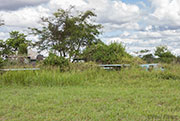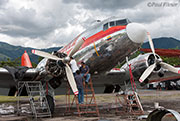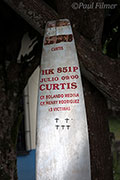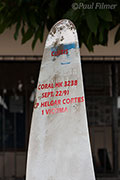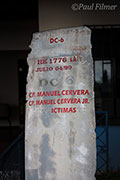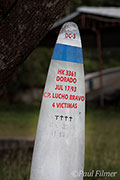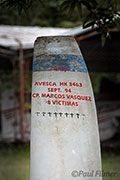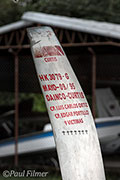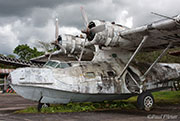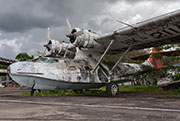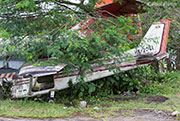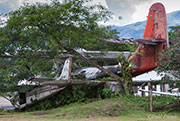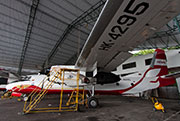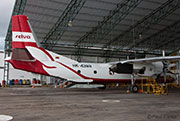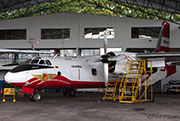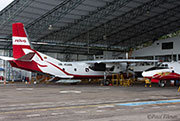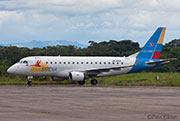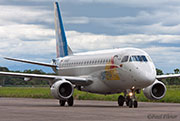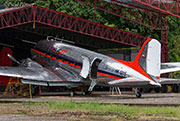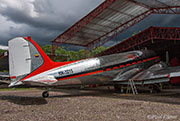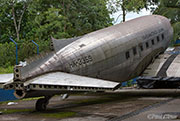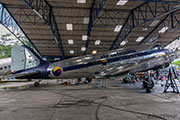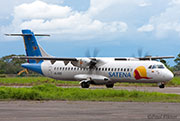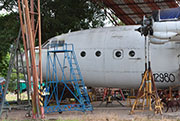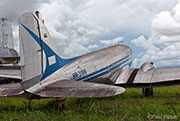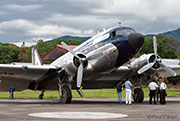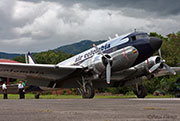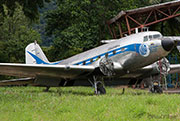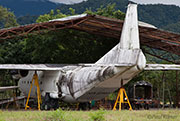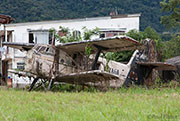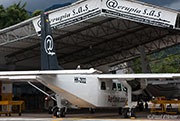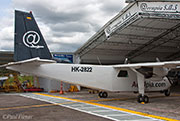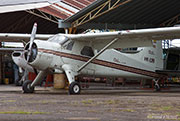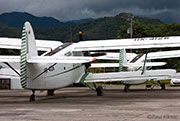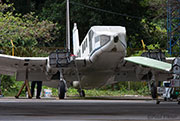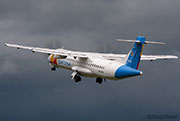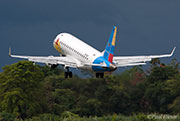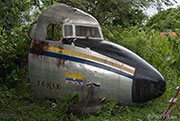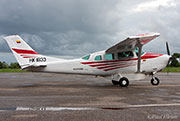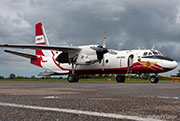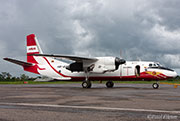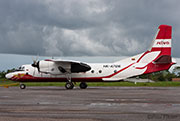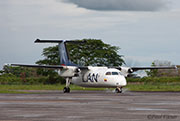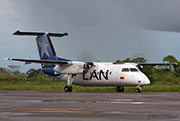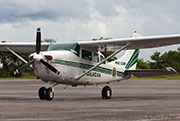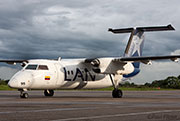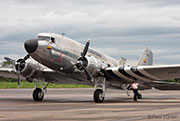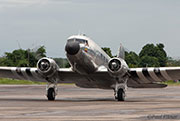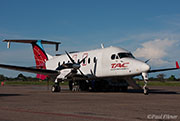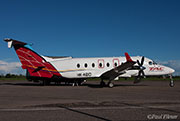After our visit to Guaymaral, the next day saw an early start and a long drive to the Douglas DC-3 Dakota Mecca of Villavicencio.
Although this airfield is now a pale comparison of its former propliner heyday, it still hosts many operators that use the old equipment to travel into the jungle interior, which many remote villages still rely on.
The coach drive took us through the mountains for three hours, with stunning scenery either side, but longer than normal, as lots of road construction was taking place in order to improve transport links.
On arrival we were allocated a guide for the ramp and the plan was to walk from one end to the other.
Starting at the south-western end, the first company we came to was Sadelca. They have operated a selection of aircraft since 1974, the most numerous being the DC-3.
There were three DC-3s present when we visited, all of them ex-military aircraft of various C-47 marks.
A couple of Russian transports were also parked, an An-26B-100 and a very smart looking An-32A.
I was surprised to see an An-2 parked on the grass, and it even looked airworthy. Little did I know that there were another three at the opposite end of the airfield!
Aliansa have the most western ramp and here we found a DC-3 being worked on. HK-2820 was built as a C-47A in 1944 and operated with the USAF until 1951. It was a nice touch to see Aliansa putting back invasion stripes on the rear fuselage, as a tribute to her military service.
There were also a couple of other DC-3s stored in this general area, presumably as spares sources, but in these parts you never really know if they will be restored to airworthy condition again in later years.
Hiding in amongst the weeds were a pair of BN-2A-III Trislanders. These have been here since the early '90s and are unlikely to be used again, which is a shame as Trislanders are notoriously hard to source, with a production run of just 72 aircraft.
With the high altitudes and difficult terrain, accidents are bound to happen. Close to the terminal there is a small garden, where propellers from crash aircraft are mounted, documenting aircraft fatalities from the area. There are seven currently mounted.
PBY-6A Catalina HK-2115P has been present at the airport for many years, and is now looking a little sorry for itself. Originally with the Colombian Air Force as FAC 612, she was withdrawn from use in 1974 and put up for sale. In the early 90s she emerged as HK-2115 and for many years operated a cargo service both on land and water.
Her owner, Giovanni Borde, died in an unrelated aircraft crash in 2003 and thereafter the aircraft only flew sparingly. She has remained in the position that I took the shot for over 10 years in the open, and the weather has taken its toll.
Even so, she still stands on her undercarriage and looks somehow spookily alive.
Selva are also based here with a small fleet of An-26 transports. They just recently took delivery of a Boeing 727, but this was delivered after our visit.
Air Colombia has a ramp further to the north-east of the long ramp, and here we found one DC-3 being worked on inside the hangar.
We waited around as we were told another Air Colombia example would be arriving soon, but the light didn't really play ball for decent photos.
Further down the ramp were another pair of old Soviet aircraft. The first was An-12B RA-12980. This ex-Aeroflot aircraft came to Colombia in the late '90s and was briefly operated by Sadelca before changing hands, and has most likely not flown since. I can't find much more information on this aircraft.
HK-3960-X is a rather sad looking An-2 last operated by Taga and is an ex-Cubana operated aircraft. She has been in Colombia since 1994 and looks unlikely to ever fly again, as she is slowly being reclaimed by the vegetation.
One real surprise was Evangel Air 4500-300-II, HK-1362-G. It looks like it is slowly being restored at the back of an open hangar, and is one of only nine built, this being 005.
There were also a pair of good looking An-2Ps, HK-4126 and HK-4127, and both looked to be in great condition, stored with their engines wrapped. Access to these plus the Evangel was denied and we were shooed away, probably because the An-2s were reportedly operated as drug-runners in their not so distant past.
At the rear of the hangar's landside we found the nose of DC-6 HK-1700, which was stored here for over 10 years, but has since been scrapped. At least a part of this aircraft still currently survives.
It was about this time that the heavens opened and the rain poured down in a deluge for around 30 minutes. We retired to the terminal building after procuring some well-deserved Colombian beer.
Idle minds hatch plans, and we goaded our tour leader and our guide to walk down to the Sedelca hangar, to see if the An-32 was available to charter. The following day we were also due to spend the day here, after our planned visit to Apiay had been cancelled, which would be a recurring theme on this trip, so we needed a diversion.
Our fearless leader returned with no news so we decided to hatch our own plans, after spying the Selva office next door to our "bar".
No aircraft were available to charter, but they had a flight the following day to the Venezuelan border, with room for us to travel along. We were given a price and let the rest of the group know. Only five of us decided to take the plunge.
As I'd never flown on an An-26, it seemed churlish to pass up this opportunity. Job jobbed! Selva An-26 flight
